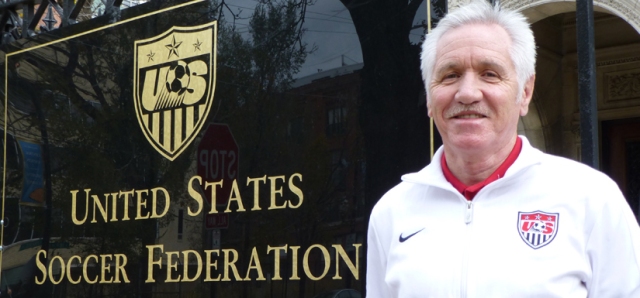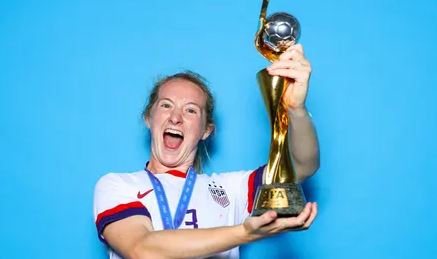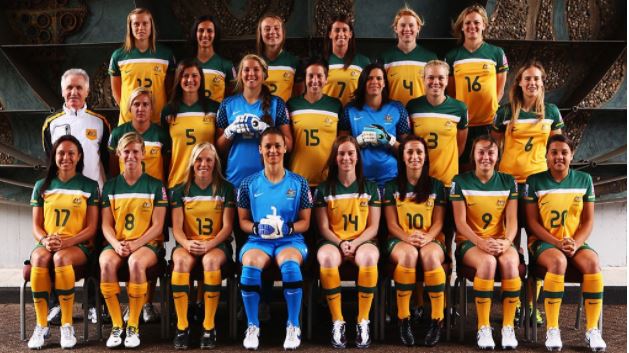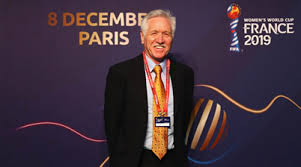
Tom Sermanni, currently head coach of New Zealand’s national women’s team, is perfectly positioned to talk about the current state of women’s football (or soccer, if you need) around the world.
He has coached men’s professional teams during his career but established his reputation as one of the leading coaches in the women’s game leading Australia, the United States, and now the Football Ferns. He also coached New York Power in the Women’s United Soccer Association – the first professional women’s league in the US – and Orlando Pride in the National Women’s Soccer League.
It’s fair to suggest he has informed perspective on many issues on and off the pitch that face the sport today. This conversation took place in May 2020 on the phone with Tom at home in Sydney, Australia. His next call that day was a Zoom meeting with his New Zealand team’s technical staff.
How has moving the Olympics to 2021 affected New Zealand’s preparation for the tournament? Is it an advantage or disadvantage?
I certainly don’t see it as a disadvantage for New Zealand. We have limited resources, geographical challenges, and players scattered all over the world but we have a settled squad that is going to stay that way for at least another year. The delay might actually even up preparation compared with teams that are well resourced and are in parts of the world where they can usually get constant and significant competition. The disruption for us is less. It might actually even up preparation.
You’ve coached New Zealand, the USA, and Australia, and also worked with Canada at the 2015 World Cup. What’s the difference between each team’s set up?
Canada, New Zealand, and Australia are similar in how things are run. Australia has probably edged to another level with resources and staffing while New Zealand finances are a little tighter. The USA is a different animal altogether. When I had the US team it was at the cusp of the start of the NWSL. Prior to the league starting, the US team was like a big club team. There was limited professional football for the players but they had resources far greater than any other international team. They were able to get together more than any other team and they were able to have contracts – they were professional players playing for the US national team.
Is it all about how much money is committed to women’s soccer by the federations?
The US Soccer Federation still has the greatest financial muscle but the English, French, and Spanish FAs are now starting to significantly resource their teams – far better than they were seven or eight years ago. In women’s international football now, getting access to players only in FIFA windows is becoming the norm and players being professional is becoming the norm. It is very similar to men’s football – except in the US. All the US players play in the NWSL and all the players are paid by US Soccer – who have complete control over them. That gives the US a significant advantage over other teams.
Is there a difference in each team’s culture? What is the coach’s role in that?
It can be a big challenge so coaches have to be open minded. In my experience, the USA, Australia, Canada, and New Zealand, have a lot of similarities culturally. They have much more relaxed environments. They are not rigid. You would not go in there with a whole lot of rules and regulations. So if you try and bring in an old fashioned British type of environment where ‘This is how we do things’ or a strict environment like how Dutch and Italian football may have been run you wouldn’t get the best relationships with the players or an outcome for what you are trying to do. So you have to be able to embrace the culture you are going in to without compromising what you are trying to build within your team. Ultimately it is about how you manage people and how you manage players.
But what about team culture?
‘Culture’ is one of these buzzwords that is going around right now and the devil is in the detail. What’s important are the actions that you take to create a culture. Consultants can come in and talk about it but as a coach you really need to take action. As an example, the New Zealand players got together with a guy who spoke about team culture with them and the team came up with some values. Often that can mean nothing – just a whole lot of words. So the key thing is that if you come up with a list of values then those values must get lived day in and day out. You cannot have those values if people go off and do their own thing or create factions within the team. But the coach is the person who is responsible for results, performance, and how the team operates on and off the field so he or she plays a key role in the team culture and is the person who ultimately has to drive that.
The US team has a long history of conflict with its federation. Was that something you were aware of when you were in charge of the team?

Sermanni during his time as head coach with the US women’s national team
I was aware of it for a considerable period of time – coaching in the US at club level, coaching against the US for 25 or so years, and also eventually coaching the team. They were in dispute with the federation when I was coaching the team. I remember the 2013 Algarve Cup and the players were having at least two meetings a day. Part of the challenge at that time was to agree amongst themselves what they wanted before they went to the federation.
There is a lot of history there.
There was always a very tenuous relationship between the players and the federation. The US national team was probably the only national team at that time who had significant player power for a significant period of time. If you go back into the mid 1990s they were the only full time women’s team. They had a profile and they had a following and because of that the players have always had power. We have seen it with the Australian team in 2015 where they refused to play. That would never have happened 10 years ago. The US though have been the leaders in standing up but with that they have had an adversarial relationship with their federation.
The US team also wields player power in relation to coaches. Is this a common thing with teams and how does any coach manage that?
I think that is something that you have to accept when you go into the job. You have to know that it’s there and manage within that. It’s unlikely you will change it especially if you have to make decisions against players that have got a lot of influence within the team. That also happens with a lot of men’s teams. You are not going to take the Argentina team job and put Messi on the bench. Not that you would ever put Messi on the bench but with influential players in any team that’s the way it is. The US players, in relation to other women’s teams, have a greater influence and power base than other teams. That is something that you have to accept and work under. It’s no different than managing other things you have to consider: a difficult chairman or factions within the team. It is just something you have to take into account.
Why is the US so dominant?

Sam Mewis – Sermanni introduced the USWNT star to the national team
If you look at women’s football and the numbers playing they outweigh the rest of the world combined. More so than any other country, they also have girls that have played soccer from a very young age as their sport of choice. There is also an infrastructure that keeps significant numbers of people playing the game from the critical age of 17 to 21 with the college system. There is an incentive for young players to play. American players have been exposed to higher levels of training and competition than anywhere in the world – other than elite programs. So you have that mass. You also have more resources and youth national teams with full time staff. The NWSL has given players further time to develop in a professional environment. When I was national team coach there was turnover needed in the squad and a need for greater competition. Over time I brought in Crystal Dunn, Sam Mewis, Lindsay Horan, Morgan Brian, and Julie Ertz, into the team. They weren’t ready at that stage to get established in the team but the NWSL had a big impact for those players to take the next step up.
Will anyone ever topple the US as the #1 team?
It will be hard to knock them off the number one spot but there are more teams that have a better chance to beat them. If you look at the 2019 World Cup, they were the better team but there were a lot of tight games through the group games and into the final. They have a lot more depth than other teams which helps them as they get deeper into tournaments. No one else has the depth that the US has.
Do you prefer coaching international teams or club teams?
I’ve coached international teams more in the past 15 years or so. With an international team, what you are doing is preparing for tournaments. You are looking for a different kind of player. You are looking at different tactics and you are looking longer term. With a club team the season starts and you are looking week to week and sorting things out for the next game. It is a different focus. The international game is becoming more different because access to players is becoming more limited. You used to have more time with players but now you get players two days before you need them and you have two or three games over a week and then you don’t see them again for a few months. The building part, which I liked, is now more difficult.
You still have ties to Australia. Why do you think the Matildas were so disappointing at the 2019 World Cup?

Sermanni and his 2011 Australia squad for the FIFA Women’s World Cup.
There were high expectations of them and the disruption with the sacking of Alen Stajcic had a bigger impact than the federation anticipated. That decision and the timing of it is still baffling to everybody. Ante Milicic is a very accomplished coach but went to a team he didn’t really know just before a major tournament with limited access to players and limited preparation. That puts any coach in a very difficult situation. Even a year and a half into the New Zealand job, with a group of players I now know pretty well, I’m still just feeling now that I have a handle on the team and how we need to play and what our strengths are. So to put someone in that situation six months before a World Cup like what Ante faced is very difficult. It is like any job. It takes time. But If you look at all the factors of the Matildas’ preparation it was no huge surprise to see them not play as well as they should have.
Were you surprised by Alen Stajcic’s dismissal?
As shocked as everybody. I was at a W-League game with him the week before and it seemed like business as usual. When these things happen there are a handful of people who know what is going on but I don’t know anybody outside that specific group of people who knew what was actually going on. The timing and thought behind it was poor and the outcome of it was that it was responsible for a lot of the turmoil and ultimately the team’s performance at the World Cup.
What was New Zealand’s biggest challenge at the 2019 World Cup and how can you improve at the Olympics next year?

Sermanni at the draw for the 2019 FIFA Women’s World Cup in Paris
One of our biggest challenges is consistency. We have a solid competitive national team but to win matches we have to be at 100 percent in every game. We have to get everything right in every game. We also don;t have enormous depth in the squad so we are relying on a smaller number of players. The number of times we can get the team together is limited and that also means the opportunity we have to blood new players is limited. The geographic location of New Zealand is a challenge too with our staff in New Zealand but players everywhere from Iceland to Portugal to America. When we get together it is logistically and financially challenging.
You had some excellent individual players at Orlando Pride when you were coaching in the NWSL but often that didn’t mean results were positive. How does a club coach turn individuals into a team?
The American system is unique. Elsewhere, if a player is out of contract you can say I think these players will fit in to what we are trying to do and try to sign them. In America, you don’t have free access to players. Clubs basically own players until they die. It makes it more difficult to get the players who you think would fit into your system. The NWSL teams that have been successful are the ones that have been stable since the league started. With Orlando, it became very difficult because we started off with players that other teams offered [in a team expansion draft] rather than signing players that you wanted. So you have to trade off things to get the players you want in your team. Building a team in the NWSL is more difficult than other places in the world where freedom of movement is easier.
Look at the Premier League and, say, Sean Dyche of Burnley. He decides this is the team that Burnley is – they are not Manchester City – and this is the type of team he needs to build, this is the system he needs to play, and this is the type of player that he needs to bring in to stay successful and where he needs to be in the league. Then other teams will spend crazy money to patch something together and bring in players in the hope that they all play well together. But you need time. You need continuity. And then you need a bit of luck. You need the players that you want to have to play the way you want to play.
In the modern game, everyone wants instant success. But what ends up happening is you get a lot of change and a lot of inconsistencies. When I had the Matildas I had time to develop a team, a system, and players. So when we made significant changes between the 2007 and 2011 World Cups they were easy to make because we had continuity in the system. If you look at Man City when Guardiola came, in his first season he was successful but not as successful as people thought – where he was going to come in and suddenly do wonders with the team. It took him a year to get his philosophy in place and get the players he wanted. Since then he has been able to implement his style of play, his management philosophy, and what happens within the club and that becomes very important. Behind that, you need management that doesn’t make decisions based on emotion. Sport is strange because even the most rational of businessmen are prone to make irrational and emotional decisions.
Who is the best female player in the world right now?
That is such a tough question. One of the difficulties with women’s football is that you don’t get the chance to see players as much as the men. I don’t get to see Ada Hederberg play at Lyon very often and she doesn’t play internationally. Some other players who play internationally may not play for the better teams. It is hard for their qualities to shine through. One player that has qualities that I admire is Vivianne Miedema from Arsenal and Holland. She reminds me of a female Mark Viduka. Her ability with her feet, her composure in the penalty area, her reading of the game, and her ability to score goals. You have to also put Megan Rapinoe in there and also mention Sam Kerr. It will be interesting to see once she gets established in the English game how she adapts. That will be an opportunity for her to take her game to the next level.
Who is the best up and coming player?
What age do you call an up and comer? One of the best for me is Ellie Carpenter of Australia. She has incredible physical qualities. She’s 20 and for someone at her age to go in and get established in the NWSL with Portland Thorns, one of the best teams, is significant.
The best player you have coached?
The two that stand out are both Brazilian: Marta and Sissi. Their inherent knowledge of the game was significant. They could see and understand the game ahead of other players. But whether they made a simple decision or a complex decision they could also make a wrong decision [laughs]. A player from left field would be Collette McCallum, the Aussie. She was technically on another level with her passing range and vision. She knew what she was going to do before the ball got to her. She wasn’t great physically but in pure football terms she was as good as any player I have coached. The challenge was getting other players on the same wavelength as her. I have clips from the 2007 World Cup where Collette and Sarah Walsh had a great connection. Walshy was exceptionally quick and as the ball was coming to Collette she would start a run and Collette would deliver a perfect ball. But she went and played in the US and was extremely unsuccessful because other players weren’t on the same wavelength and she didn’t have the physical qualities to be running up and down the field week in and week out.
Do top coaches talk to each other? Is there a secret WhatsApp group?
No! There’s a reasonable number of coaches I am in contact with but we don’t necessarily talk about football. I will have club coaches connect with me asking about Australian or New Zealand players and quite a few college coaches connect with me about young players coming through. But there’s no secret groups. We’re still in a competitive environment so sometimes there is a bit of an edge to a lot of the relationships with coaches.
What are the biggest challenges for female coaches at the elite level?
Women’s professional football is still very young. Many men have been playing from a young age right the way through and are able to stay in the game in some capacity. That pathway is beginning to develop for women. You don’t have to go back very far to when women couldn’t make a living out of football. They were studying or had another career as a teacher or a lawyer or in healthcare and that was what they had to do as they got older. That wasn’t the case in men’s football and that was part of the lack of opportunity for women in football. They had to get jobs that paid. There’s still not a significant number of reasonable paying jobs in women’s football. But one of my biggest frustrations when I was with Australia was that there was a big push from the administration to get women coaches appointed to the national team. No – what we need to get is more women coaches – at all levels. You can’t just pluck someone from somewhere and say now you are coaching with the national team. We look at the top of the pyramid instead of looking at the bottom. As the game gets more professional and players become professional from a younger age there is more likelihood of more professional female coaches. It’s also not just about coaching. There are more women in other roles – whether it is head of women’s football at a federation or being an analyst – and we need to keep putting things in place to encourage women to stay in those jobs.
What do you enjoy most about coaching?
I don’t know [laughs]. I like the tournaments, the travel, getting together with teams, hanging around airports and hotels. I quite enjoy being on the road! I enjoy being part of a team. I enjoy working with young people who are motivated and want to be successful. I enjoy seeing how players you have coached have gone from being young men or women and how they achieve something further down the line. I enjoy that I have met so many people and been to so many places. I have been unbelievably fortunate to be involved in a game and something that I played in the streets back in Glasgow and still have the opportunity to be involved in it. The other thing is the unique connection you can have with people that lasts forever. You can meet up with someone you played with when you were 18 and not seen them for 30 years and it is like you saw them just yesterday. When you talk with people in the game they never talk about the medals or trophies they have won or the recognition. It’s about the experiences they had with the team. It is the people and the personalities and the things that happened – even if it is the bus driving off and leaving someone behind in the toilet [laughs].
Sections of this interview with Tom Sermanni originally appeared in the May 2020 issue of Play On magazine. For more details about Play On – including back issues – click here.
